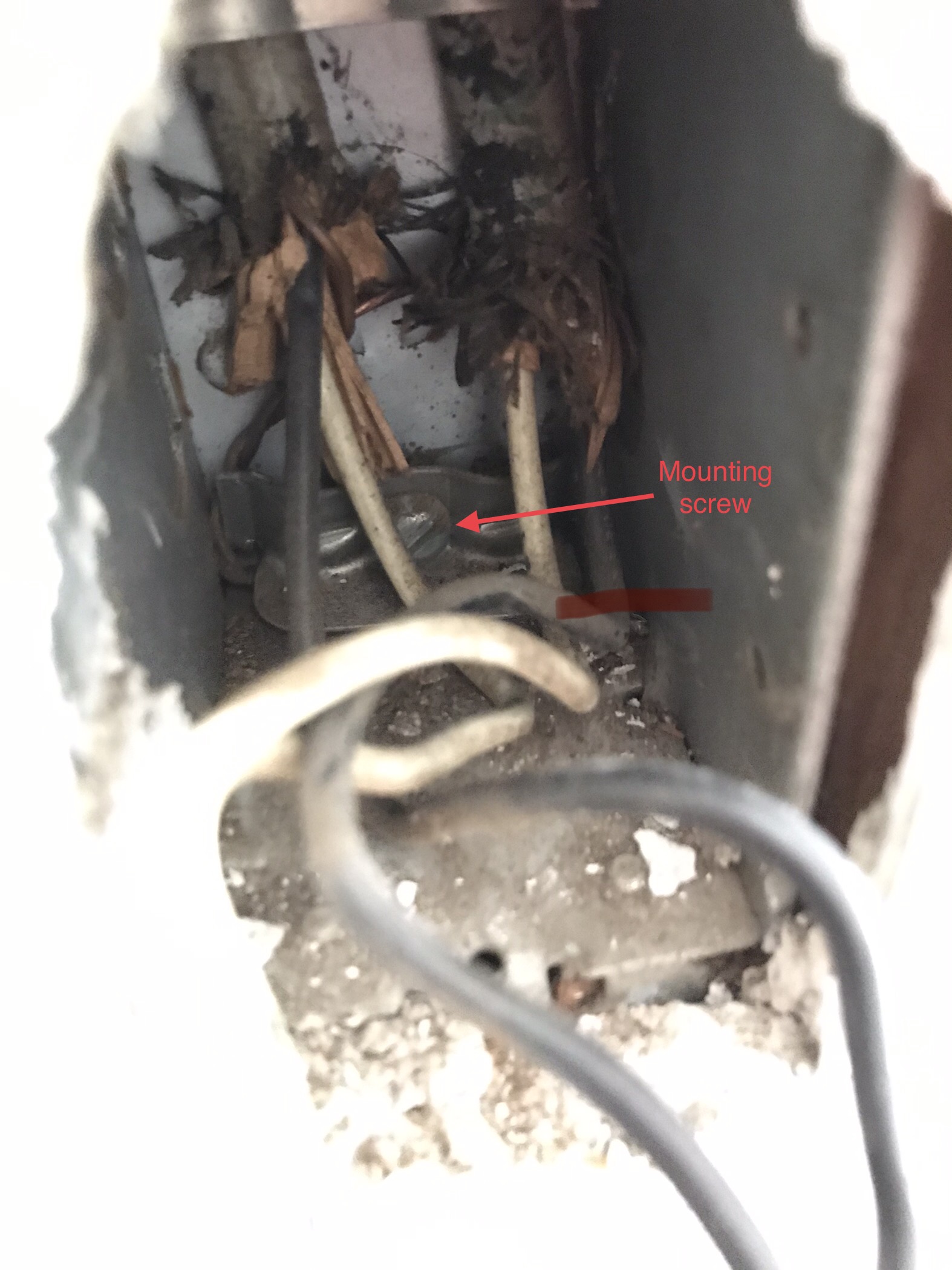I have an outlet in the age that appeared to be from 1960s. I decided to replace it with a GFCI receptacle after getting charging issues with EV. After opening the outlet up, it appears that the metal box has no grounding screw and the existing grounding wires are wrapped behind the mounting screws (the box has two mounting bracket, one on the top and one on the bottom and each bracket has some space to the back of the box - see the picture). So my question is, how can I be code compliant with the installations of GFCI?
- Connect a pigtail wire to the mounting screw then wire nut both grounding wires and the two pigtail wires?
- Install GFCI with no device grounding and put a label on it.
- Drill a hole for 10-32 and add a grounding screw - this is what I am least capable of doing.
- Any other solutions?
Having never dealt with an older house, appreciate your advice and help!

